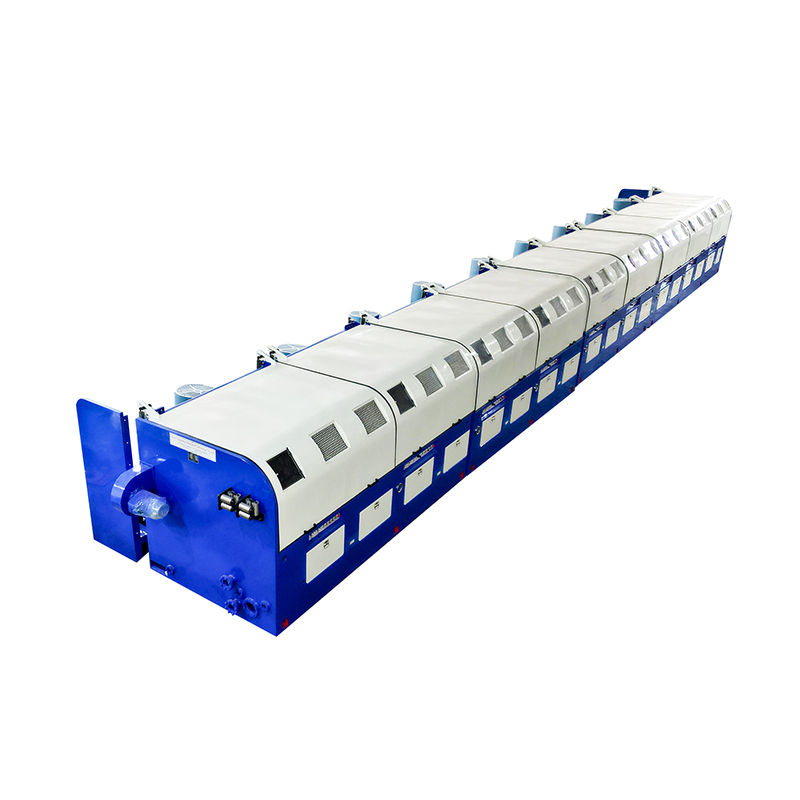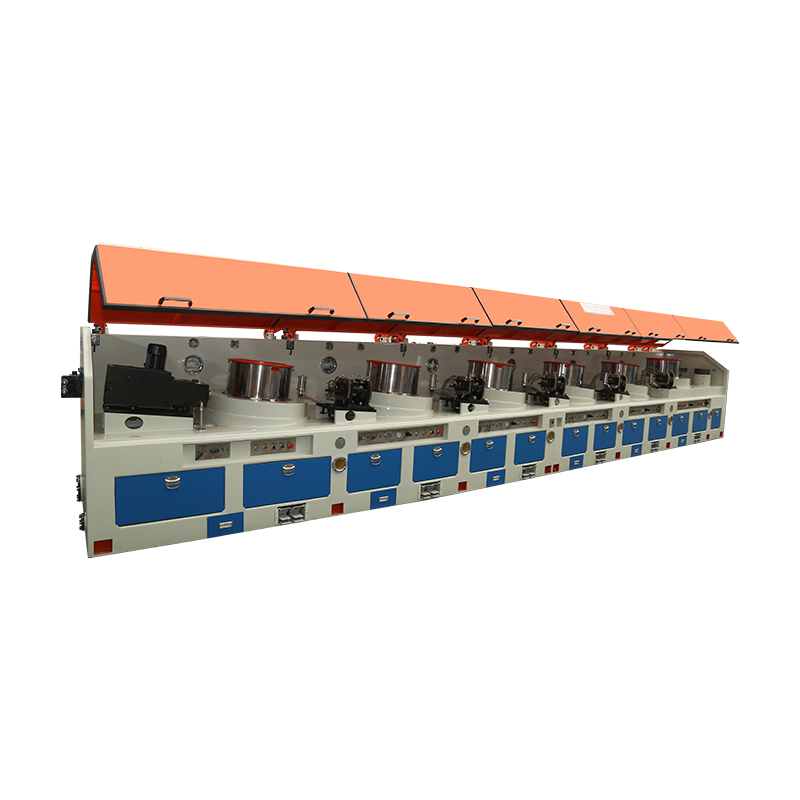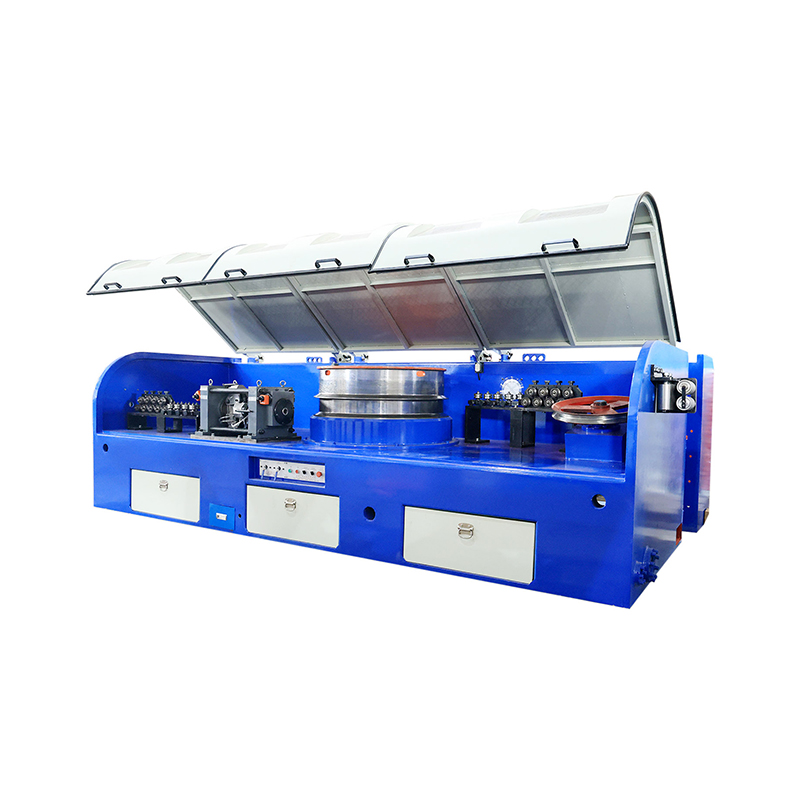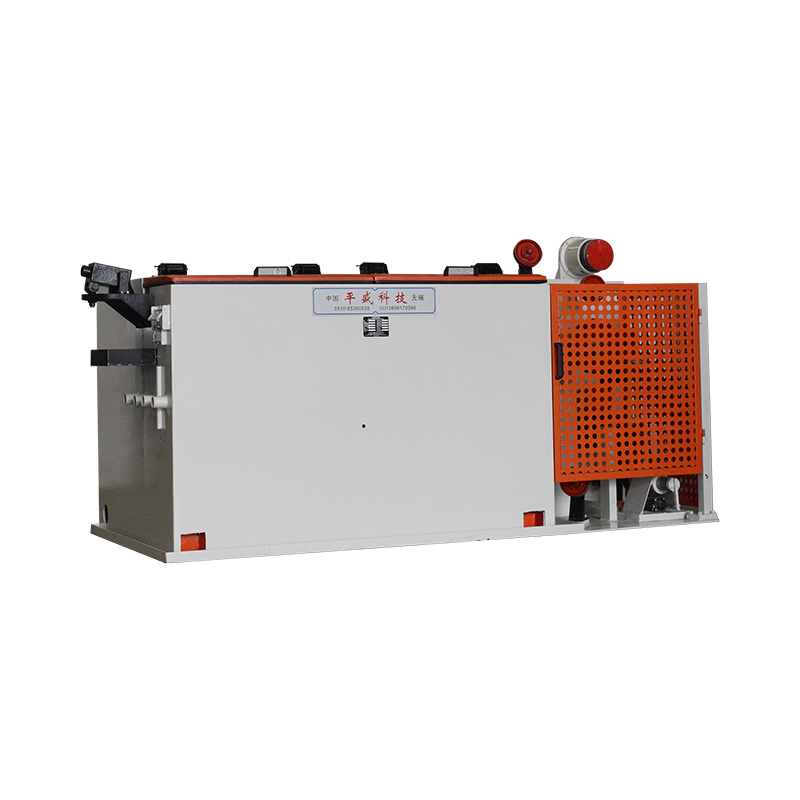How Does a Turnover Type Wet Wire Drawing Machine Handle Different Types of Wire Materials?
Wire drawing is a crucial process in the manufacturing of metal wires for a wide range of applications. Whether it’s for electrical cables, construction materials, or automotive components, wire drawing determines the final quality, diameter, and strength of the wire. One of the machines widely used in wire drawing is the Turnover Type Wet Wire Drawing Machine, which stands out for its efficiency and ability to handle various wire materials with precision.
In this article, we will explore how a Turnover Type Wet Wire Drawing Machine works, particularly in its handling of different types of wire materials. We will cover its design, the process involved, and how it ensures optimal results across diverse wire types, including copper, aluminum, steel, and brass. Additionally, we will discuss how the wet drawing process improves the wire’s surface quality and mechanical properties, such as strength and flexibility, and why this machine is a preferred choice in the wire production industry.
1. What Is a Turnover Type Wet Wire Drawing Machine?
A Turnover Type Wet Wire Drawing Machine is an advanced type of wire drawing machine that uses a wet process to reduce the diameter of wire rods. The machine gets its name from the turnover mechanism, which allows the wire to pass through the drawing dies in a manner that minimizes friction and ensures a smooth, high-quality surface finish.
Key Features of the Turnover Type Wet Wire Drawing Machine:
- Wet Drawing Process: Unlike dry wire drawing, the turnover type machine uses a lubricant, typically water-based or oil-based, to cool the wire and reduce friction during the drawing process.
- Turnover Mechanism: This feature ensures that the wire passes through the drawing dies in an optimal orientation, preventing excessive wear and maintaining the wire’s surface integrity.
- Multiple Dies: The machine can be equipped with several dies to reduce the wire’s diameter gradually, which helps in maintaining uniform mechanical properties along the wire.
- Cooling and Lubrication: The wet process includes a constant supply of coolant or lubricant, which not only reduces friction but also keeps the wire at an optimal temperature, ensuring better surface quality and mechanical properties.

2. How Does the Turnover Type Wet Wire Drawing Machine Handle Different Types of Wire Materials?
Wire drawing machines, including the turnover type, are capable of handling a wide variety of wire materials, each with its unique properties. The machine’s design, especially the lubrication and turnover mechanism, ensures that each type of material is processed efficiently and without compromising its strength, ductility, and surface finish. Let’s take a look at how the machine handles some of the most common wire materials:
2.1 Copper Wire
Copper is one of the most commonly used materials in wire drawing due to its excellent conductivity, malleability, and ductility. Copper wire is used in a wide range of industries, including electronics, electrical cables, and power transmission lines.
- Handling Copper: Copper is known for its softness, making it easier to draw but also more prone to damage during the drawing process. The wet drawing process is particularly beneficial for copper, as the lubricant helps to cool the material and reduce friction, preventing the wire from becoming work-hardened.
- Surface Quality: The turnover mechanism ensures that the copper wire passes smoothly through the dies, avoiding surface imperfections such as scratches or galling. This is especially important in electrical wiring, where a smooth surface is crucial for optimal conductivity.
- Dimensional Control: The turnover type machine allows for precise control over the wire’s diameter. Copper wire can be drawn to very fine dimensions, making it ideal for use in small-gauge electrical wires or micro-cables.
2.2 Aluminum Wire
Aluminum is another popular wire material, known for its lightweight, corrosion resistance, and cost-effectiveness. However, aluminum is more brittle than copper, and its tendency to oxidize makes the drawing process more challenging.
- Handling Aluminum: Aluminum is drawn in a similar manner to copper, but it requires more attention to the lubrication system. Since aluminum is more prone to oxidation than copper, the turnover type machine uses specialized lubricants that prevent oxidation during the drawing process. The wet drawing technique ensures that the aluminum wire remains cool, which prevents the formation of oxide layers that could affect the wire’s mechanical properties.
- Flexibility: The wet drawing process allows aluminum wires to be drawn to smaller diameters without compromising their flexibility and strength. This is particularly important for industries like aerospace, where lightweight yet strong wiring is essential.
- Surface Finish: The turnover mechanism in the machine ensures that aluminum wires have a smooth surface free from oxidation, making them more suitable for electrical applications.
2.3 Steel Wire
Steel wire, especially high-carbon steel, is widely used for mechanical and structural applications due to its high tensile strength. Steel wire is commonly used in automotive, construction, and manufacturing applications.
- Handling Steel: Steel is much harder and stronger than copper or aluminum, requiring more force during the drawing process. The wet process helps to cool the steel wire and reduce friction, preventing it from becoming too hard or brittle during the drawing process.
- Lubrication: The wet drawing process for steel typically uses water-based lubricants with additives that reduce friction and heat generation. The turnover mechanism ensures that the wire is pulled through the dies in a way that prevents excessive wear and tear on both the wire and the dies.
- Surface Finish: Steel wire, especially when drawn to finer diameters, must have a smooth finish to avoid cracks and defects. The turnover type machine helps maintain the wire’s integrity and ensures that the surface remains free from defects like pitting or scratching.
2.4 Brass Wire
Brass, an alloy of copper and zinc, is commonly used in decorative applications and electrical fittings. It has a unique appearance and good corrosion resistance but is less ductile than pure copper.
- Handling Brass: Brass wire is more challenging to draw than copper due to its lower ductility and higher hardness. The wet drawing process is ideal for brass, as the lubricant reduces friction and prevents the wire from becoming too brittle.
- Strength and Durability: Brass wires, when drawn using the turnover type machine, maintain their strength and corrosion resistance. The wet process ensures that the wire is uniformly drawn and has a smooth surface, which is critical in applications like electrical connections and plumbing fittings.
- Surface Finish: The turnover type machine allows for precise control over the surface quality of the brass wire, preventing defects and ensuring a shiny and smooth surface. This makes it ideal for use in cosmetic and decorative products where appearance is key.
3. The Advantages of Wet Drawing for Handling Different Wire Materials
The wet drawing process provides several distinct advantages over dry drawing, particularly when it comes to handling various wire materials. Some of the key benefits include:
- Reduced Friction: The presence of lubrication reduces friction between the wire and the die, ensuring smoother drawing and reducing the risk of surface defects.
- Temperature Control: The coolant helps maintain an optimal temperature during the drawing process, preventing overheating and ensuring the wire retains its mechanical properties.
- Improved Surface Quality: The turnover mechanism allows for smooth, defect-free wires, which is crucial for industries that require high-quality surface finishes for electrical and mechanical components.
- Increased Drawing Speed: Wet drawing allows for faster production speeds, as it reduces the need for frequent pauses or restarts to cool the wire or clean the dies.
- Extended Die Life: The wet drawing process reduces wear on the dies, leading to longer die life and reduced maintenance costs.
4. Conclusion
The Turnover Type Wet Wire Drawing Machine is an essential tool in the modern wire manufacturing industry, capable of handling a wide range of materials, including copper, aluminum, steel, and brass. The machine’s design, particularly the wet drawing process and the turnover mechanism, ensures that each material is drawn efficiently, with minimal friction, optimal temperature control, and a smooth, high-quality surface.
By understanding the unique needs of different wire materials and applying the appropriate drawing techniques, the turnover type wet wire drawing machine maximizes the material’s potential, ensuring that the wire produced meets the necessary specifications for strength, flexibility, and surface quality. This capability makes the turnover type machine indispensable for industries ranging from electronics and construction to automotive and decorative design.


 EN
EN
 English
English Español
Español Français
Français Português
Português عربى
عربى














